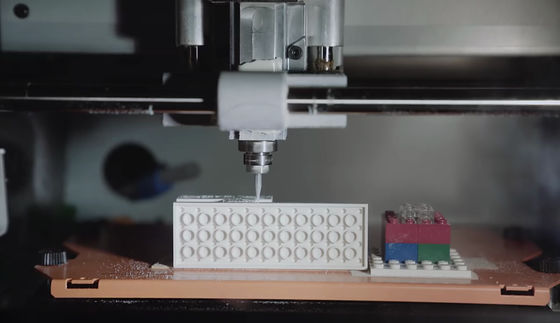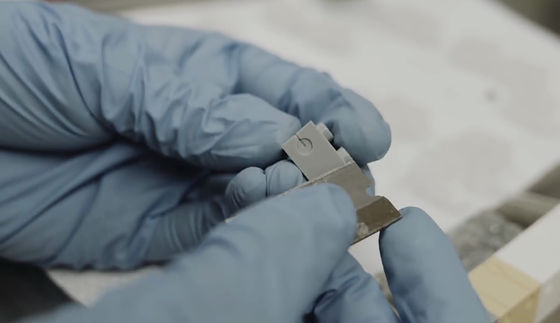MIT engineers developed a device that can test "microfluidics" by combining Lego blocks

The dynamics that works when a liquid passes through a very fine region below millimetersMicrofluidicsIt is known that behavior different from ordinary dynamics occurs. In order to study this field, precision machined equipment etc. are required, but engineers at MIT are able to easily examine the experiment of microfluidics by processing the LEGO block We have developed a device that can do.
Microfluidics from LEGO bricks | MIT News
http://news.mit.edu/2018/microfluidics-lego-bricks-0131
The state of the experiment device of micro fluid dynamics using LEGO can be seen in the following movie.
Lab on a LEGO - YouTube
A device combining a Lego block looks like this. A fine groove with a width of 500 microns (= 0.5 mm) is engraved in the white block placed on the top, blue liquid flowing from the left semi-transparent block passes through the groove and passes through the right half It flows to the transparent block.

In developing this device, Professor Anastasios John Hart et al. 'S team decided to use a processing machine to apply fine processing to the surface of the LEGO block using a processing machine. The image below is a sculpture of sculpting the surface of the LEGO block that was knocked down sideways with a very thin drill.

Looking at the block after processing from the side like this. In the rounded portion, a packing for connecting with the side block is attached, so that the received liquid is made to pass through a groove engraved on the surface without leaking it.

A transparent adhesive tape is affixed to the surface where the groove is processed, and a "tunnel" of 500 micron width is made between the tape and the block. And by passing liquid through this space, we are able to conduct experiments of microfluidics. In the case of a groove of a single trunk like the above image, in addition to checking the resistance when a liquid passes through a fine space, by passing two types of liquid through a Y-shaped groove like the image below It has also been confirmed that it is possible to mix them.

The advantage of the LEGO type microfluidics experimental apparatus is that it is in the place where LEGO can be obtained anywhere in the world and that it can connect any number of devices by using the "modularity" of the Lego block.

In MIT, we confirm the effectiveness of experimental equipment using Lego block and we are trying to find out what kind of usage is possible. However, with a groove carving using a processing machine, the size of 500 microns is the limit, and further fine processing is very difficult. In addition, there are some kinds of liquids that can not be experimented because of compatibility with the material of the Lego block, so there is also a vision to improve so that a wide variety of substances can be used with high performance polymers etc. ... apparently ...
Related Posts:







